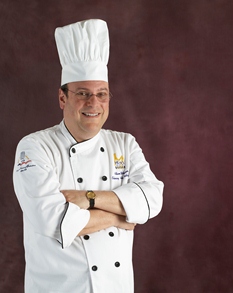I have also found that they have another use. Occasionally I will ask a student to do something: “Please make a frittata using spinach and mushrooms.” Then the student will turn to me, “Chef, what’s a frittata?” I ask to see her or his log. I then quietly say, “On November 18th I gave a demonstration on how to make a frittata and you made one that day. Look back through your notes, look at the pictures in your portfolio, and talk to your fellow students.”
Name: __________________________________________________
|
Date
|
What I Made |
Demonstration Or Video |
What I learned |
Things to Remember |
|
|
|
|
|
|
|
|
|
|
|
|
|
|
|
|
|
|
|
|
|
|
|
|
|
|
|
|
|
|
|
|
|
|
|
|
|
|
|
|
|
|
|
|
|
|
|
|
|
|
|
|
|
|
|
|
|
|
|
|
At first your students will fight you about doing this. After about a week or so it will become a routine part of each culinary training day. It will become a valuable tool for them and will start them recording what they do in your class and in their culinary careers.
Chef Adam Weiner, CFSE, teaches a 20-week Introduction to Cooking program for JobTrain on the San Francisco Peninsula, and is a frequent presenter at CAFÉ events throughout the nation.
 Having culinary students keep professional journals is beneficial to their learning—and eventual employment. But if that task is too daunting to your younger students, Chef Weiner proposes a simple, less-intimidating way for them to track their progress in class.
Having culinary students keep professional journals is beneficial to their learning—and eventual employment. But if that task is too daunting to your younger students, Chef Weiner proposes a simple, less-intimidating way for them to track their progress in class.